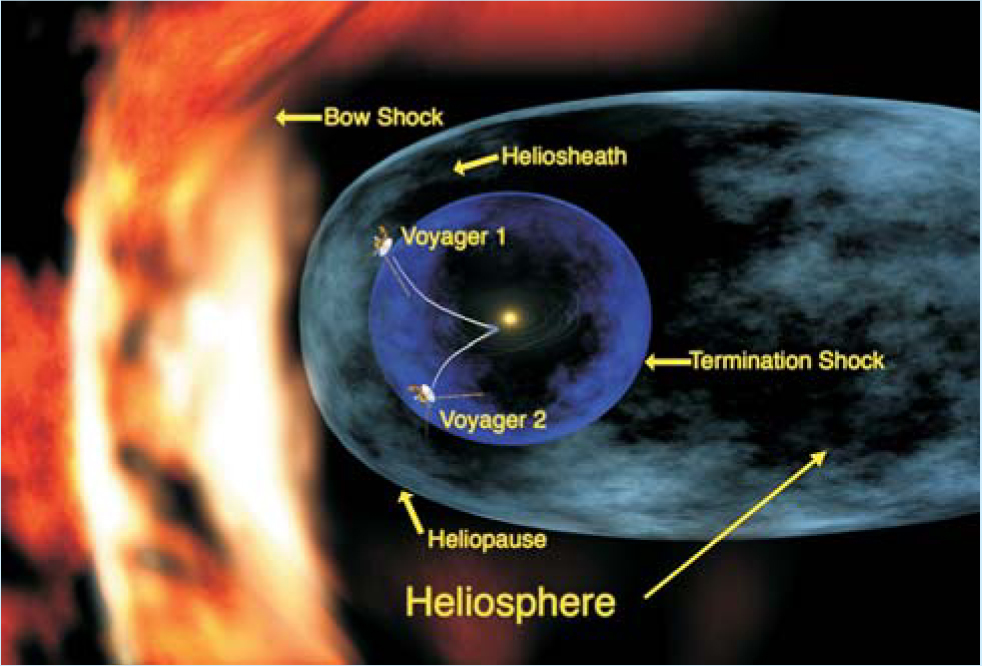The misshapen solar system
DOI: 10.1063/1.4797397
Having traveled far beyond the planets in their 28.5-year journey, NASA’s two Voyager spacecraft are providing new information on the heliosphere, the teardrop-shaped bubble that separates the solar system from interstellar space (see the diagram for an orientation). At the May meeting of the American Geophysical Union and several other geoscience-related societies, Edward Stone of Caltech reported that the heliosphere is deformed, with the teardrop’s rounded edge bulging at the top (the northern hemisphere of the solar system) and squashed at the bottom (the southern hemisphere). Robert Decker of the Johns Hopkins University Applied Physics Laboratory explained that the asymmetry can be due to a weak interstellar magnetic field (about 10−5 the strength of Earth’s field) pushing on the southern hemisphere. The interstellar field even squashes the termination shock, the boundary at which the rapidly traveling solar wind slows down abruptly and piles up. Voyager 2’s measurements indicate that the southern part of the termination shock might be up to a billion miles closer to the Sun than the northern part. Voyager 1 has already ventured beyond the termination shock into the heliosheath, where the solar wind slows as it presses against the ionized interstellar gas. Stone guesses it could be another 10 years (3–4 billion miles) before the two spacecraft pass through the heliopause and enter interstellar space, heading toward the Sun’s hypothesized bow shock. The spacecraft have about another 15 years of power left in them. (See http://www.agu.org/meetings/ja06

NASA






